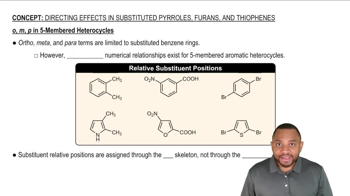Which compound is more reactive in an SN1 reaction? In each case, you can assume that both alkyl halides have the same stability.
a.
b.
 Verified step by step guidance
Verified step by step guidance Verified video answer for a similar problem:
Verified video answer for a similar problem:



 1:49m
1:49mMaster Drawing the SN1 Mechanism with a bite sized video explanation from Johnny
Start learning